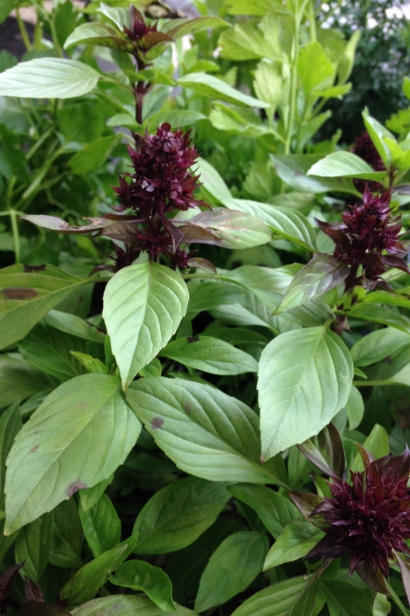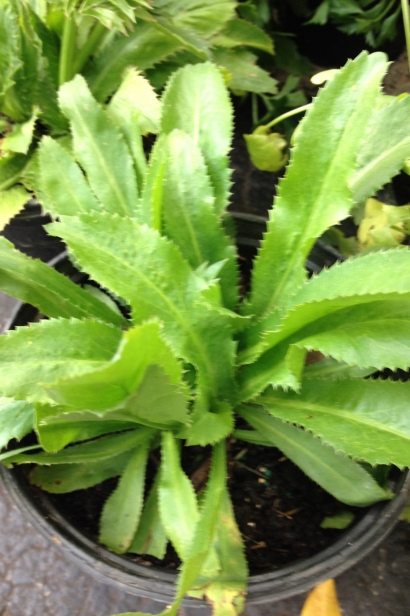Grow a Great Herb Garden
What’s the best place to grow herbs? Herbs can grow well in raised beds, in the ground or in pots. The main thing to consider is the soil and how well the soil drains, and how well the soil holds moisture. Pots can be complicated. If they’re too small, they dry fast and don’t have enough volume for plants to reach their full potential. Pots may not have enough drainage holes on the bottom. Drainage holes become clogged. Some herbs that like extra drainage (rosemary, sage, thyme, oregano) will do well in smaller pots. Once they outgrow the smaller pot, plant them in larger pots.
Choose the right soil. Most herbs do best in soil that is both fertile and well draining. Herbs that like extra drainage (rosemary, sage, thyme, oregano) need amendments for drainage, like perlite, sand or vermiculite. Herbs that like more moisture (parsley, mint) should have fewer amendments for drainage and a higher content of organic matter.
Seeds or seedlings? For many home gardeners who have a small garden, planting seedlings is a practical solution that saves time, especially for herbs that grow slowly. Herbs that grow fairly quickly (cilantro, dill, parsley, basil) can be direct seeded into a garden.
What about caring for herbs? Most herbs don’t need high amounts of fertilizer, but some fertilizer is good. Remove leaves that are dead or infected by pests. The main pests are leaf miner on basil and lemon balm and mites on parsley and cilantro. We usually focus on removing affected leaves when possible to keep pests manageable. Watering at the root level instead of the leaves can sometimes help with leaves that are sensitive to bacteria and fungus, such as basil.
Basic Herbs for South Florida Gardens
Basil One of the most popular herbs for home gardeners, basil comes in different varieties. Sweet/Italian is the most popular. Most grow as annuals, but some varieties, such as “African Blue,” can be grown as a perennial. They’re best grown from seeds, but you can also grow basil from cuttings. Pick off flowering growth tips to encourage more vegetative growth. Some of the healthiest basil plants are grown in gardens close to salt water. Basil can grow all year, but seems to do best in the warmest part of the year.
Chives These perennials grow easily and are best propagated by dividing the clumps at the roots and base of stems. Chives taste more oniony, while garlic chives are more garlicky. These can be completely cut to the ground. They regrow usually within the week after cutting. Add generously to basil when you make pesto.
Cilantro An important herb for Mexican and Asian dishes, cilantro is grown as an annual. This doesn’t do well in the summer heat. If cilantro is left to go to seed, the seeds become the spice known as coriander. Flowers attract pollinators.
Culantro Botanically not related to cilantro, but with a similar, somewhat stronger flavor, culantro grows well all year long here, even in the summer. It does best in gardens that have at least half of the day in the shade.
Cuban oregano Botanically unrelated to oregano, but similar in flavor and smell, this herb is native to Africa and is used widely in Southeast Asia and Latin America. It grows easily from cuttings and grows all year long and will take up a lot of room if allowed to spread.
Dill Used for flavoring pickles, eggs and fish, dill grows in only the cooler part of the year. Seeded densely. It’s a host for black swallowtail butterfly.
Fennel “Common” fennel is grown for the leaves and “Florence” fennel is grown for the bulb. Grown from seed, fennel grows best when it’s cooler. When cut at the base of the plant, new growth will often emerge to make more bulbs. It can be grown this way as a perennial in South Florida. It’s a host for black swallowtail butterfly.
Ginger This perennial needs at least part shade and doesn’t do well in rocky soil. It’s propagated from pieces of the root.
Lemon Balm This lemon-scented, lemon-flavored member of the mint family does best in part sun and grows from either seed or cutting.
Lemongrass This grows very large, so plant this when it has plenty of space to grow. It grows easily as a perennial and is propagated by dividing the bases of stems with their roots.
Mint Peppermint and spearmint are among the most popular of the many different varieties of mint. It can become weedy, spreading around gardens with its underground runners. Propagated by seed, cutting or division, mint prefers part sun.
Oregano Common in Italian cuisine, oregano is propagated by seed, cuttings or division. You can grow this all year long as a perennial.
Parsley “Curly” and “flat leaf” are the most common varieties. Usually grown as an annual, parsley can sometimes live two years. It’s a host for black swallowtail butterfly.
Rosemary A perennial, this herb can be propagated from seed or cutting. It can get very large if you give it enough room.
Sage Good with poultry, sage grows from seed or cuttings. Can be used as an ornamental.
Shiso This Japanese herb grows best in warm weather and does well in South Florida as an annual. Propagated from seed and cutting, shiso can grow very large and become weedy.
Tarragon (Mexican) This perennial grows by cutting or division and does better than French tarragon. It’s useful in attracting bees and keeping away unwanted insects. Very easy to grow, especially in the warmer part of the year, Mexican tarragon can get very large if given room to spread.








